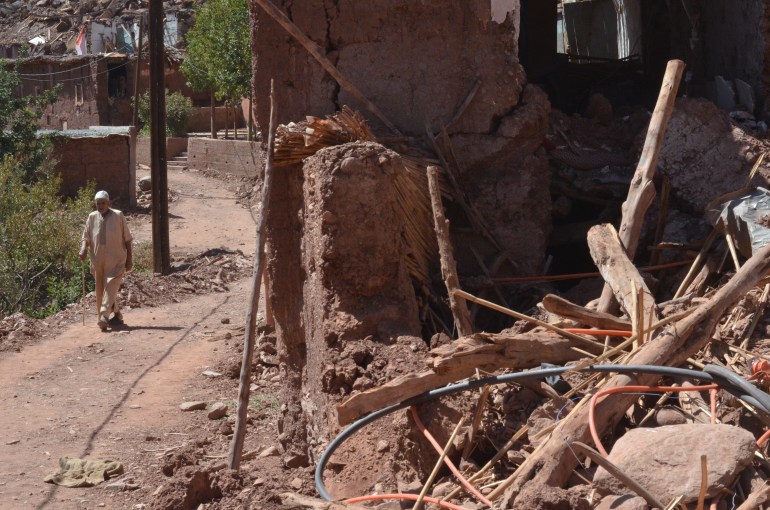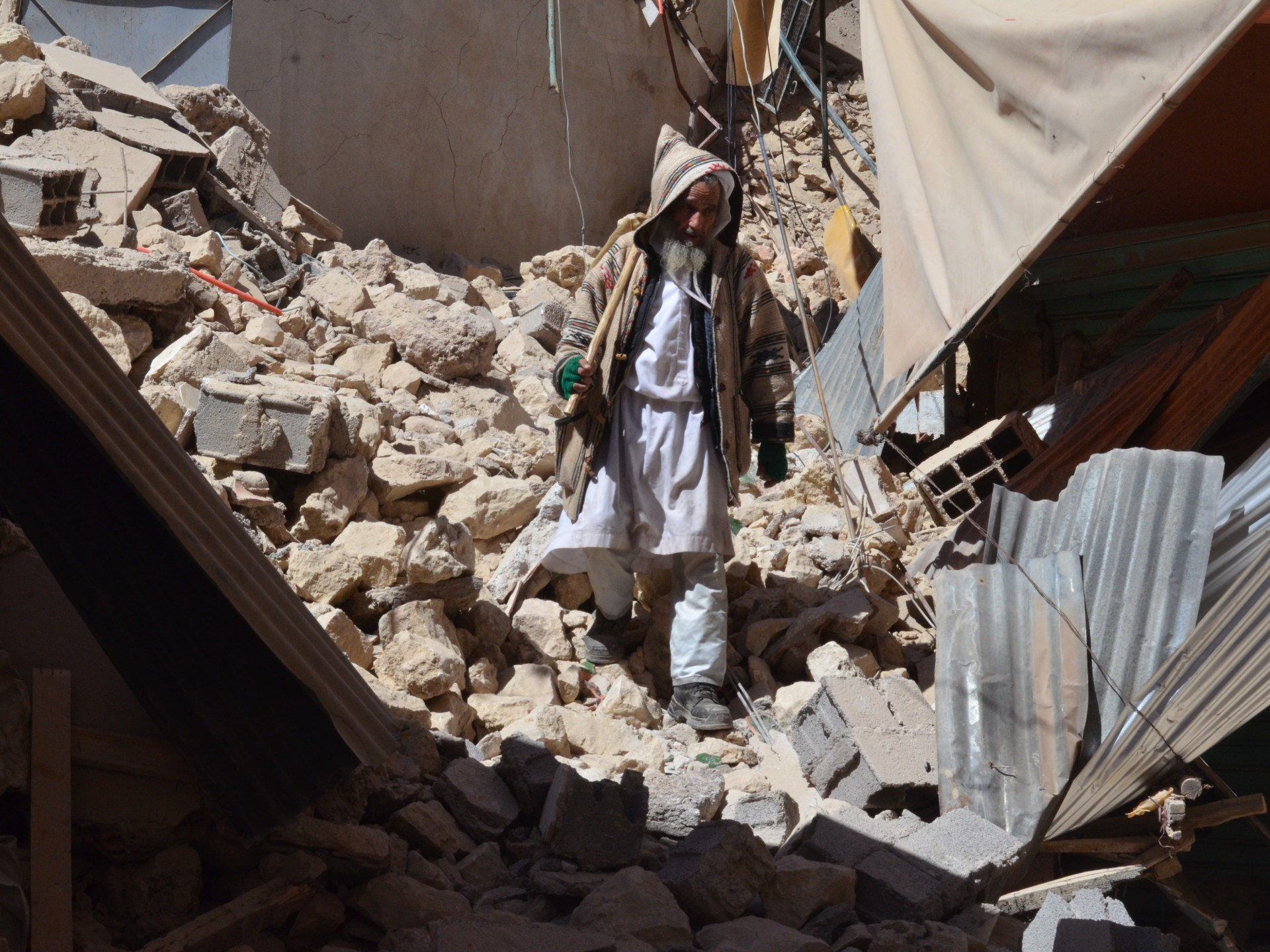Tiniskt, Morocco – The 6.8-magnitude earthquake that ripped through southwest Morocco has also cut through deeper social fault lines, separating the city dweller from those in the countryside and the comfortable from the desperate and poor, whose adobe houses proved no match for the tremors when they came.
More than 2,800 people have died so far as a result of Friday’s earthquake. The hardest hit are the poor rural villages that line the valleys and peaks of one of the Atlas Mountains near the city of Marrakesh – one of Morocco’s most popular destinations for tourists.
After what critics labelled a slow start, aid is now arriving, with Spain, the United Kingdom, Qatar and the United Arab Emirates all providing support and rescue teams, including sniffer dogs, to bolster local efforts.
However, access remains a problem, with aid yet to reach the most distant villages. For those trapped and in need of help, time is against them.
At almost 70 years old, Ahcan Ait Majid, a shepherd, wanders through the stationary traffic lining the narrow mountain road past Imgdal, leading to the mountain village of Tiniskt. He lost his wife of 50 years and two sons in the quake.
“I’ve never known anything like this,” he said, his eyes staring without focus. “I don’t know what I will do now.”

Sheltering in tents
Little but the sturdy concrete walls of the Tiniskt mosque stood any chance against the tremors. The main street is crowded by the rubble of mud and clay houses, while a short clamber into the chaos is enough to reveal the shapes of the lives that were lived here: a children’s game, a poster, a television.
Villagers are beginning to return to Tiniskt from the camp below, either salvaging what furniture they can or simply standing in the street and weeping. Further along the village’s main street, the smell of dead bodies still hangs in the air.
The villagers describe the sound of the quake hitting. For some, it was a groan. Others recount the sounds as similar to a gunfire blast.
Yazid Bilbaraka, 27, from the nearby village of Moulay Brahim, stands near the ruins of a shattered restaurant, overlooking the wide valley below.
“The sound followed the shaking,” he said, describing the quake as a low groan. The lights went off in both his house and the street, plunging Yazid and his family into pitch darkness as the tremors rolled and shook his house.
Now, along with an assortment of extended family members, they sleep in a tent by the roadside. There are eight huddled under one tarpaulin.
“I don’t know what we’ll do now,” he said. “I worked in tourism… I don’t know when I’ll go back to work.”

Aid begins to appear
Stung by initial criticism from survivors who said that relief was too slow in coming, government spokesperson Mustapha Baytas issued a televised statement on Sunday, defending the government’s response and stressing the urgency with which it was dealing with the rescue.
The proof is in the growing number of bright blue government tents beginning to take shape along the roads and within some of the hardest-hit areas.
At a field hospital, set up by the Moroccan military to help the wounded, Colonel Yussuf Quamus stood amid uniform rows of neat army tents.
He told Al Jazeera he had 24 doctors, 46 nurses and 58 social workers, plus an array of psychologists working on the relief effort.
Among those affected the worst by the quake are the Amazigh people who populate Marrakesh and the towering slopes of the High Atlas Mountains that surround the city.

Shielded by distance, the concrete walls and modern architecture of the busy tourist city were barely troubled by the quake, sustaining less damage compared with the devastation elsewhere.
The mountain roads around Marrakesh, however, paint a picture of absolute devastation, with even the relatively modern houses of villages such as Moulay Brahim destroyed.
The narrow single-lane roads that line the High Atlas Mountains were not built to accommodate the amount of traffic now trying to access the remote villages.
The roads groan under the weight of diggers, military trucks, ambulances and private individuals, spurred by the horror to load their cars and vans with whatever they can spare to bring water, mattresses and food to those who need it.
While helicopters have become a regular feature in the skies over the disaster zone, an emergency medical worker said that traffic is now among one of the principal challenges facing rescuers.
In Ourigh, near Tiniskt, aid of any kind has yet to arrive.
“Seven people died in the quake,” Lhassen Machraj, a local, said. The mountain village only has a population of about 150.
“My family is ok. We fled, but we’ve lost the animals and house, everything,” Machraj said. “I don’t what we will do. We just wait, we just wait.”

